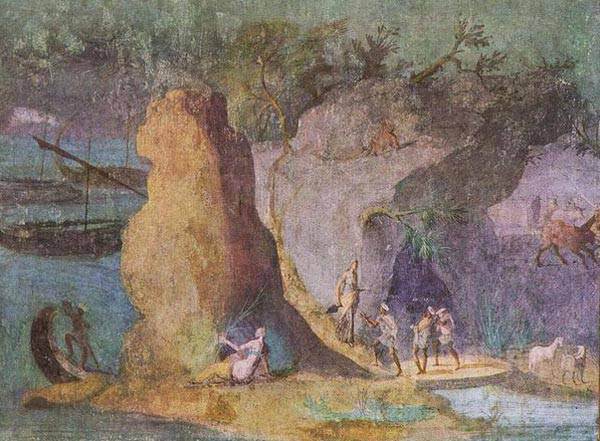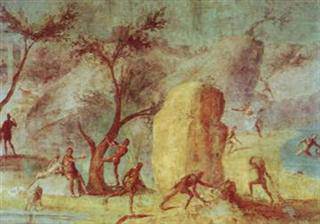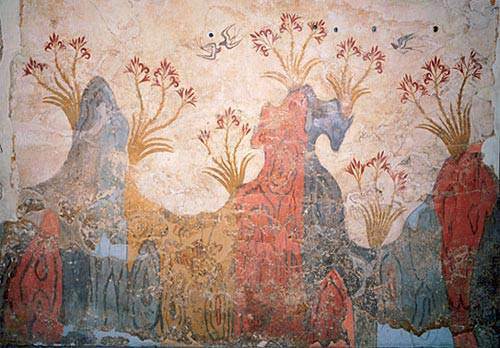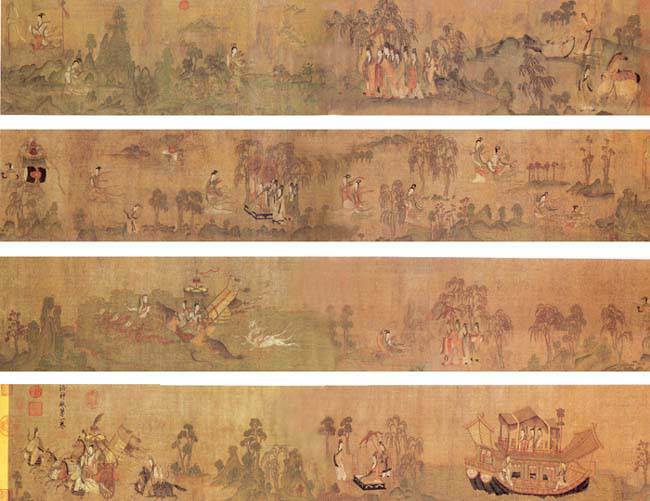Unknown author/s · Odyssey landscape

Around 60 – 40 b.C. Fresco painting. Height: 180 cm. Vatican Museums
The development of the genre of landscape was a major innovation of Roman painting compared to Greek painting. Unfortunately, few examples of this genre have come to our days. The most notable is a fresco from the Imperial villa at Boscotrecase, Pompeii, and the magnificent “Odyssey Landscapes” series found in 1848 at the Esquiline Hill in Rome.
These landscapes are a clear example of the Roman “Second style” or “Architectural style”, in which painted architectural elements (in this case the two side columns) are added to the composition, turning the paintings into “windows” to an imaginary world. It is really remarkable the feeling of depth achieved in these frescoes, considering that the concept of perspective would not be developed until 1,500 years later. To achieve this feeling, colors are faded on those parts of the composition “farther” from the viewer.
The example shown here is particularly notable for the precision with which the human figures and animals are painted. Other frescoes from the series, such as “Laestrygonians hurling rocks at Odysseus’ fleet” or “Odysseus escape” are spectacular seascapes in which the feeling of depth is even greater. Taken together, the “Landscapes of the Odyssey” are a masterpiece of Roman art and rank among the most important landscapes ever painted.
G. Fernández – theartwolf.com

“Laestrygonians preparing for battle”, another “Odyssey Landscape” from the Esquiline Hill, Rome.
Follow us on:


